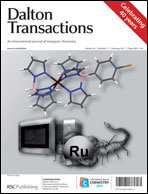Mapping the potential energy surfaces for ring-closing metathesis reactions of prototypical dienes by electronic structure calculations†
Abstract
The potential energy surfaces for ring-closing metathesis reactions of a series of simple α,ω-dienes which lead to 5–10 membered ring products, have been explored using density functional theory methods. We have investigated both the conformational aspects of the hydrocarbon chain during the course of the reactions, as well as the stationary structures on the corresponding potential energy surfaces. Extensive conformational searches reveal that the reaction proceeds via the conformation that would be expected for the


 Please wait while we load your content...
Please wait while we load your content...